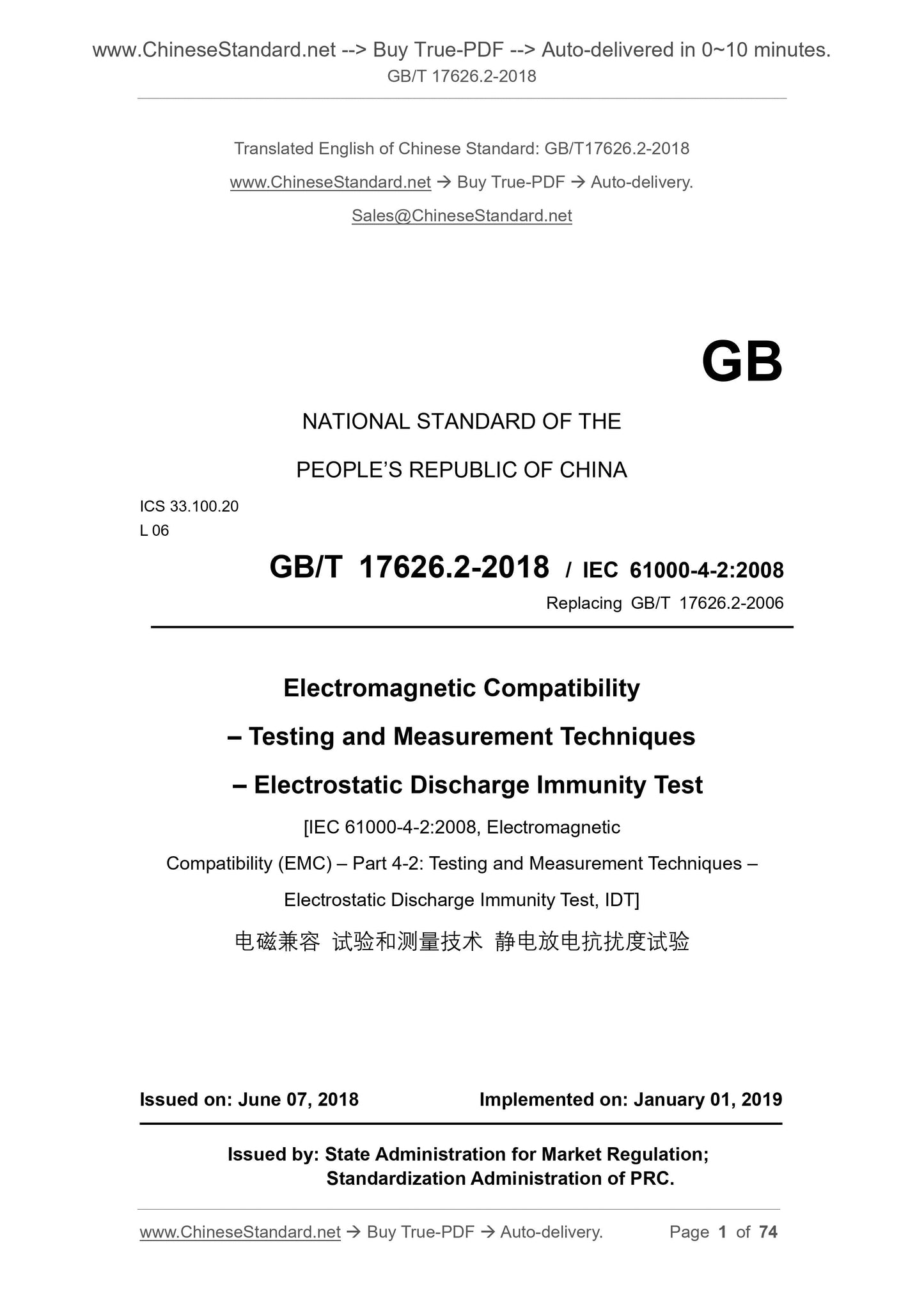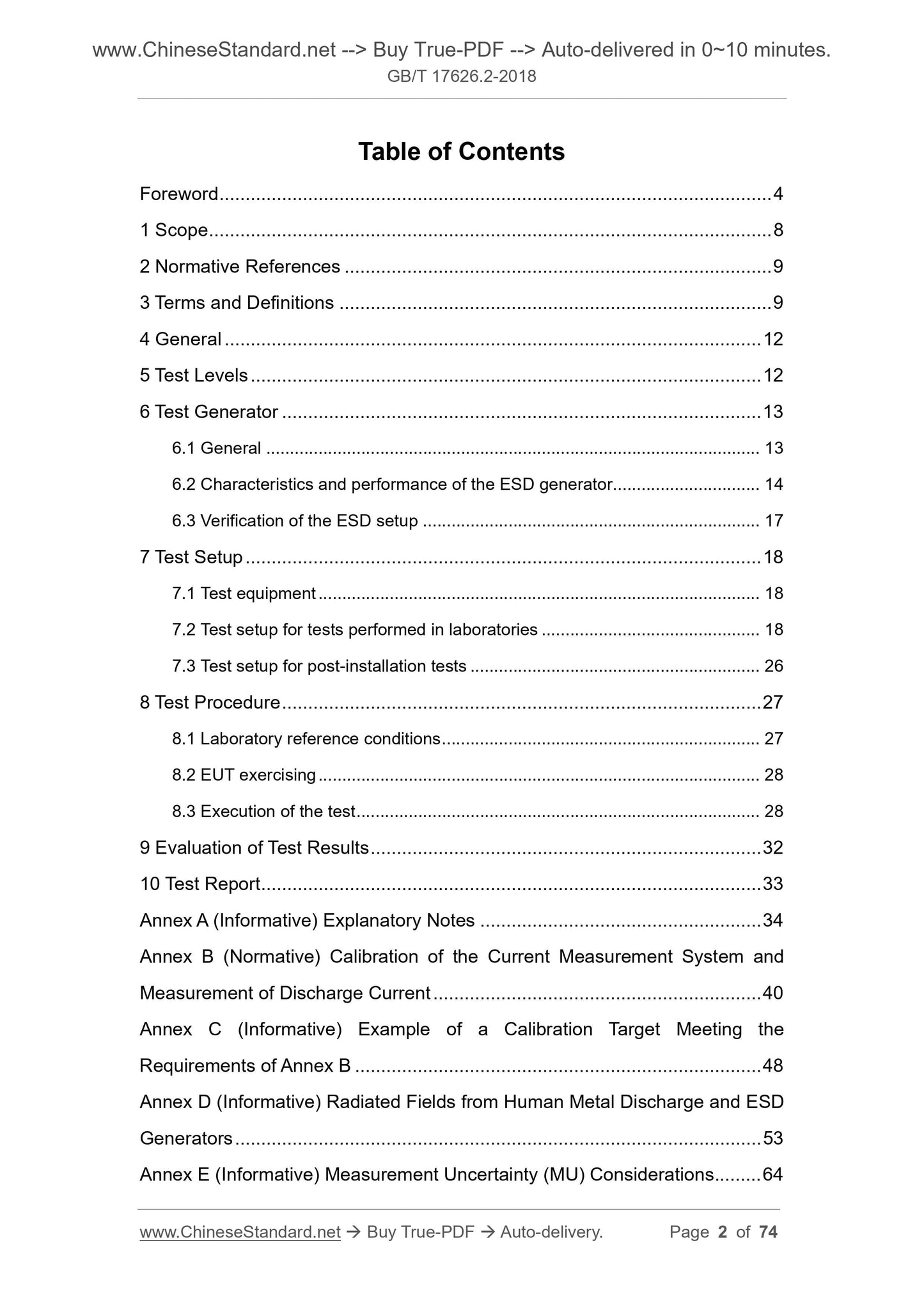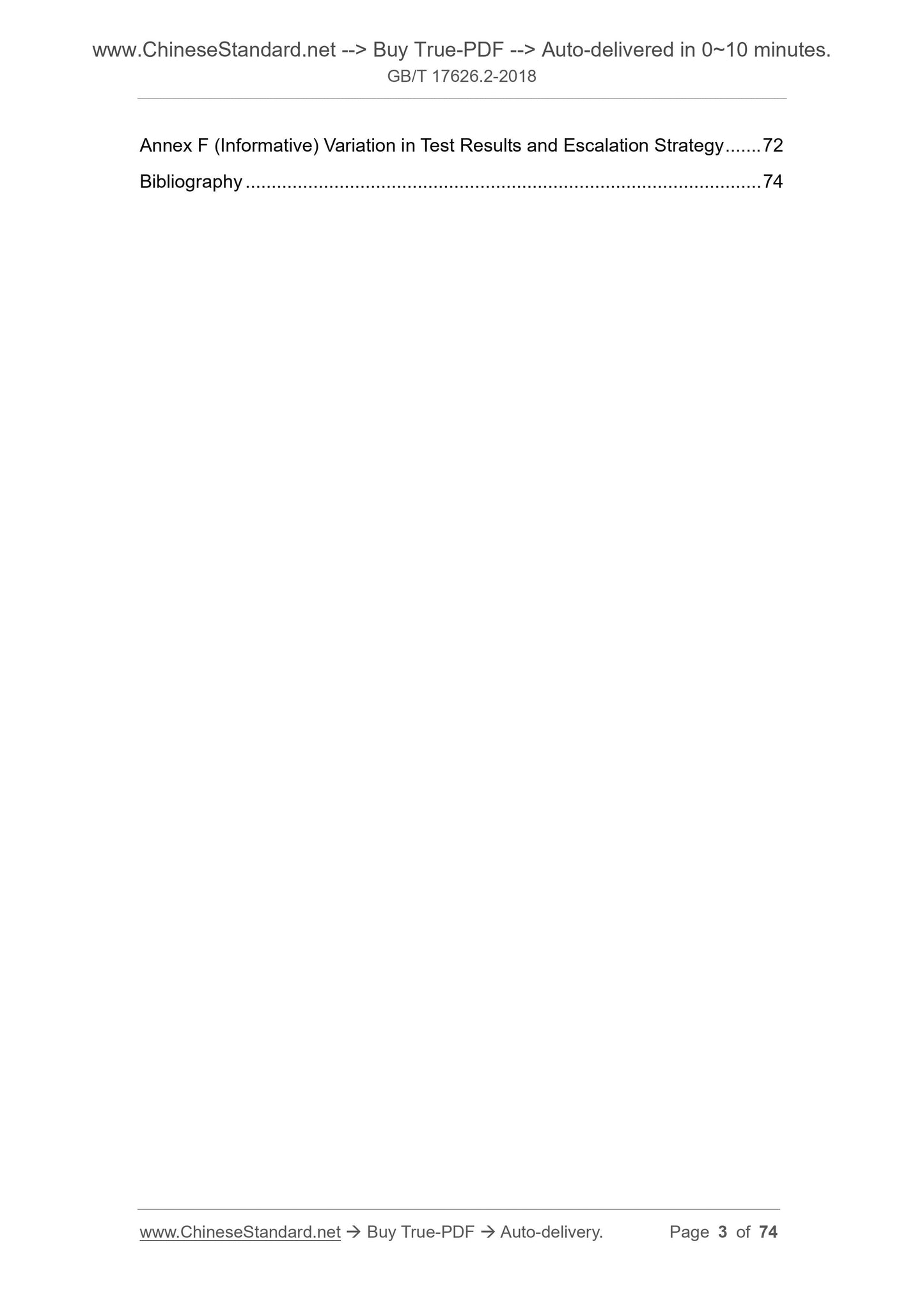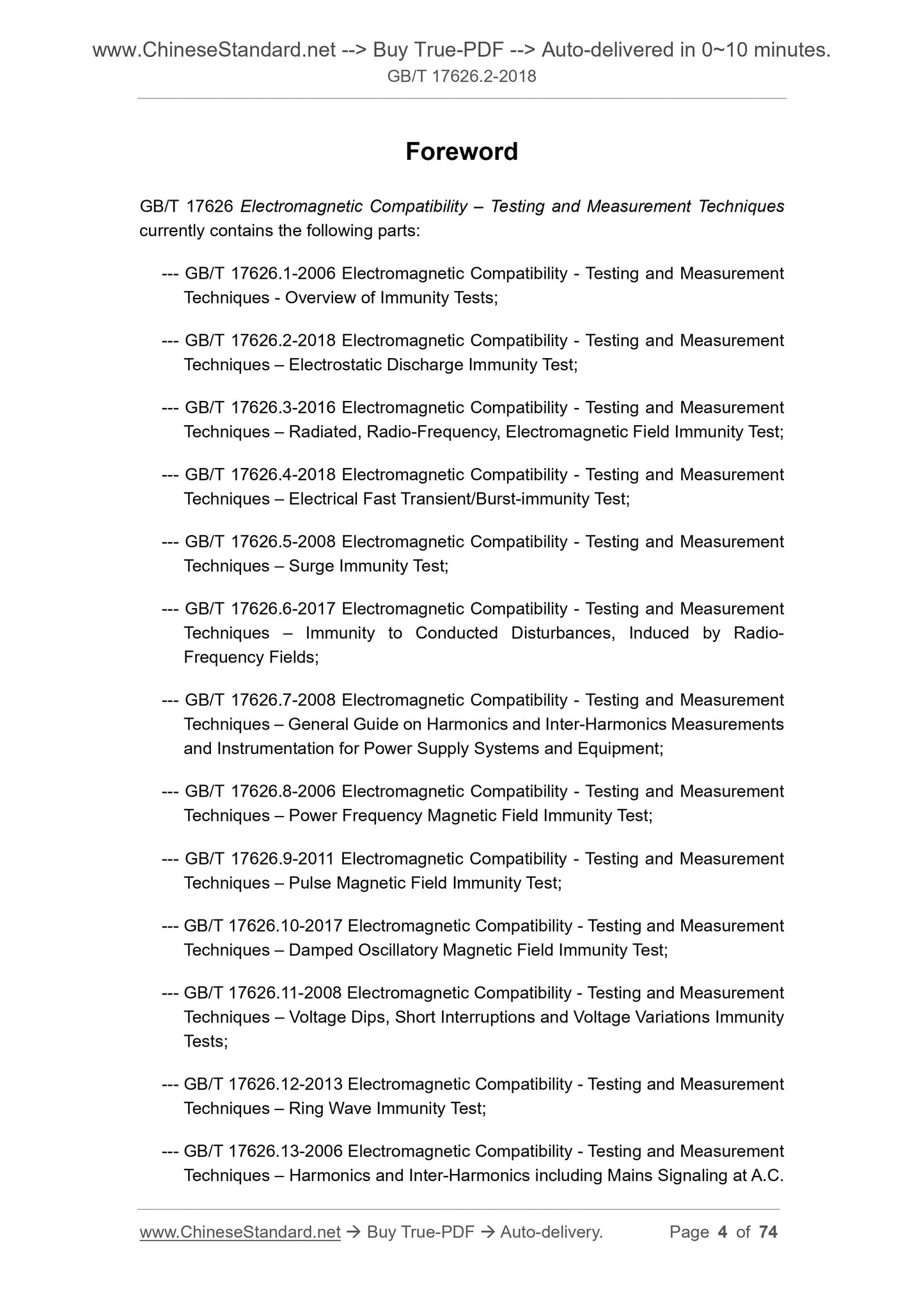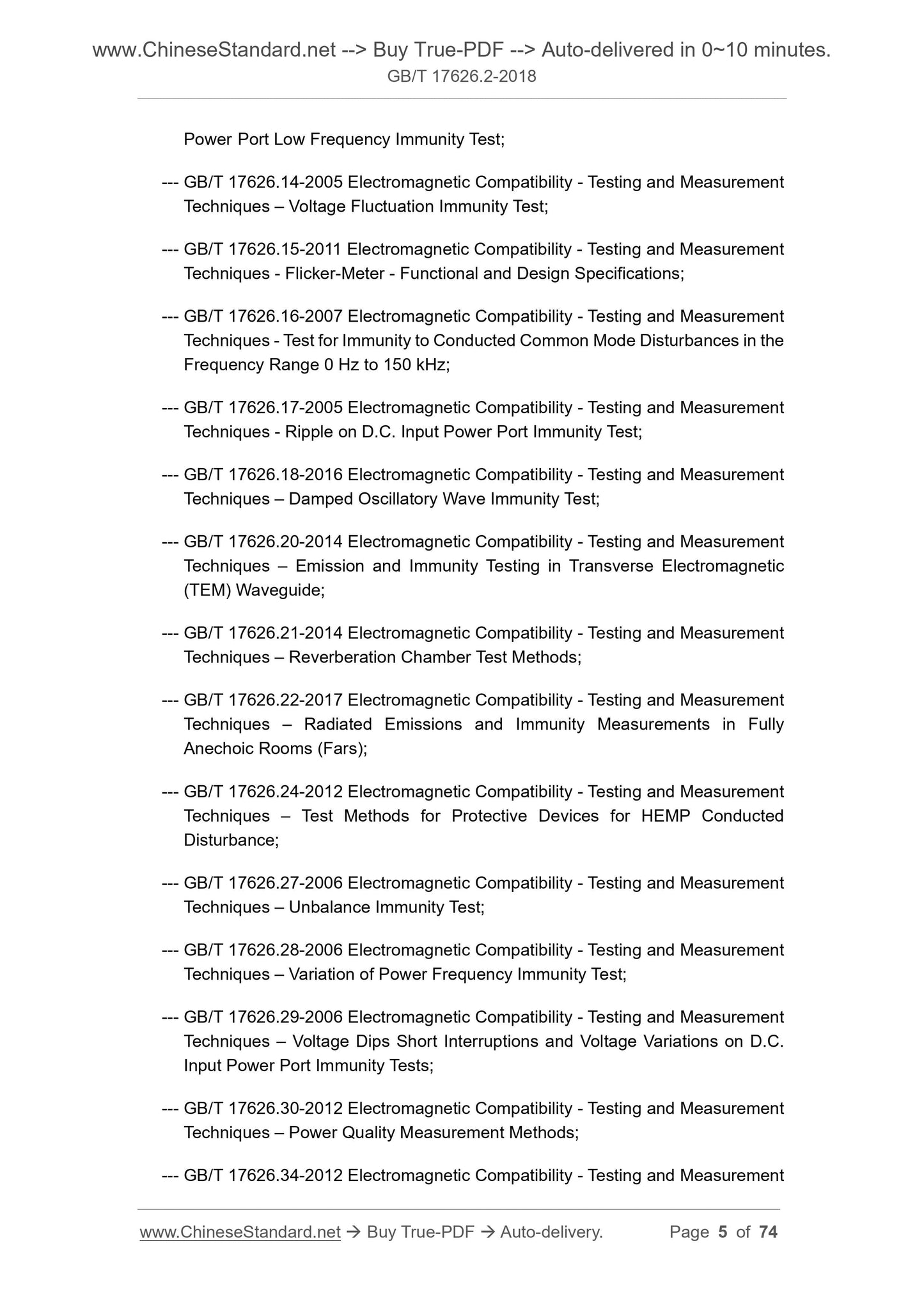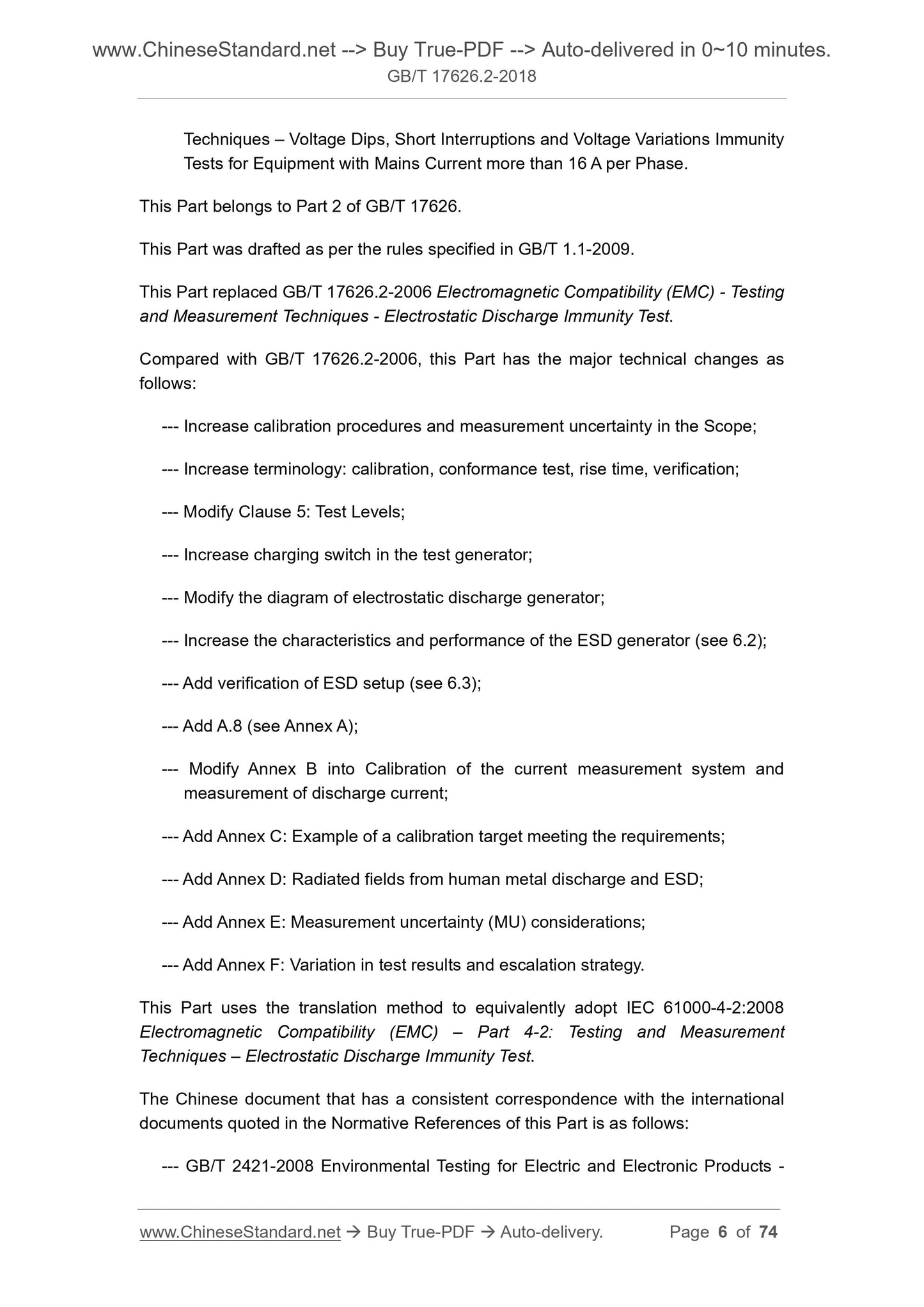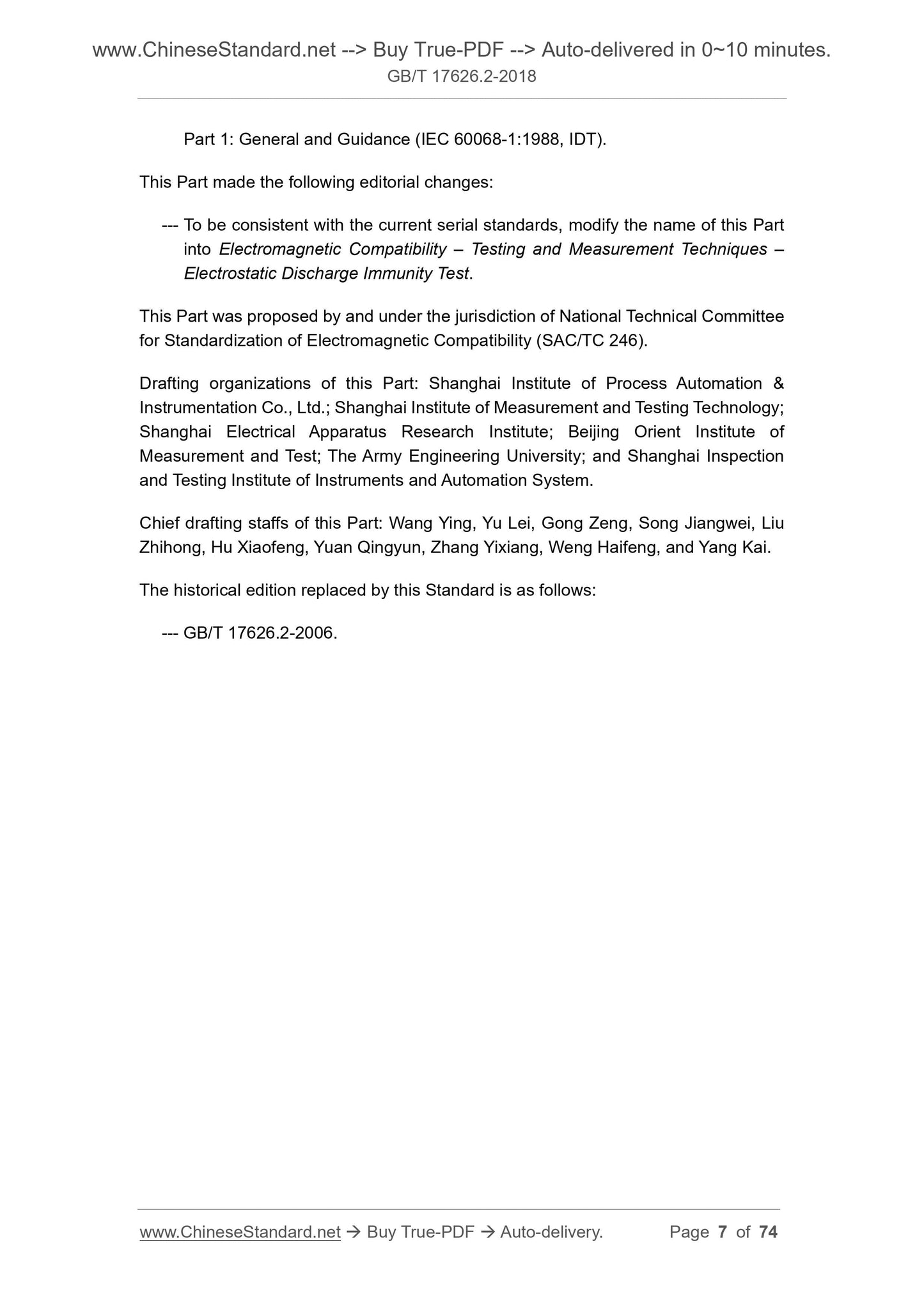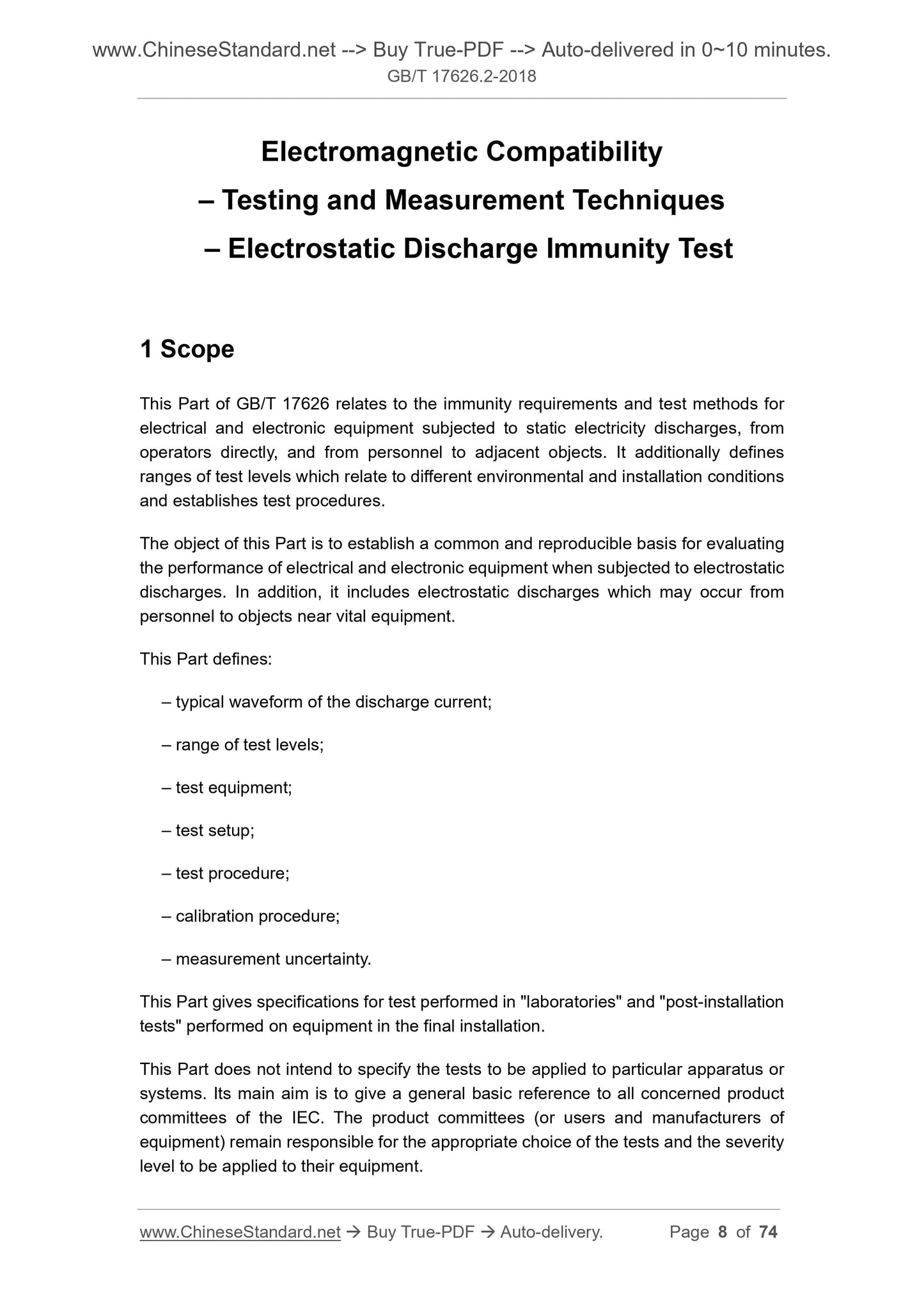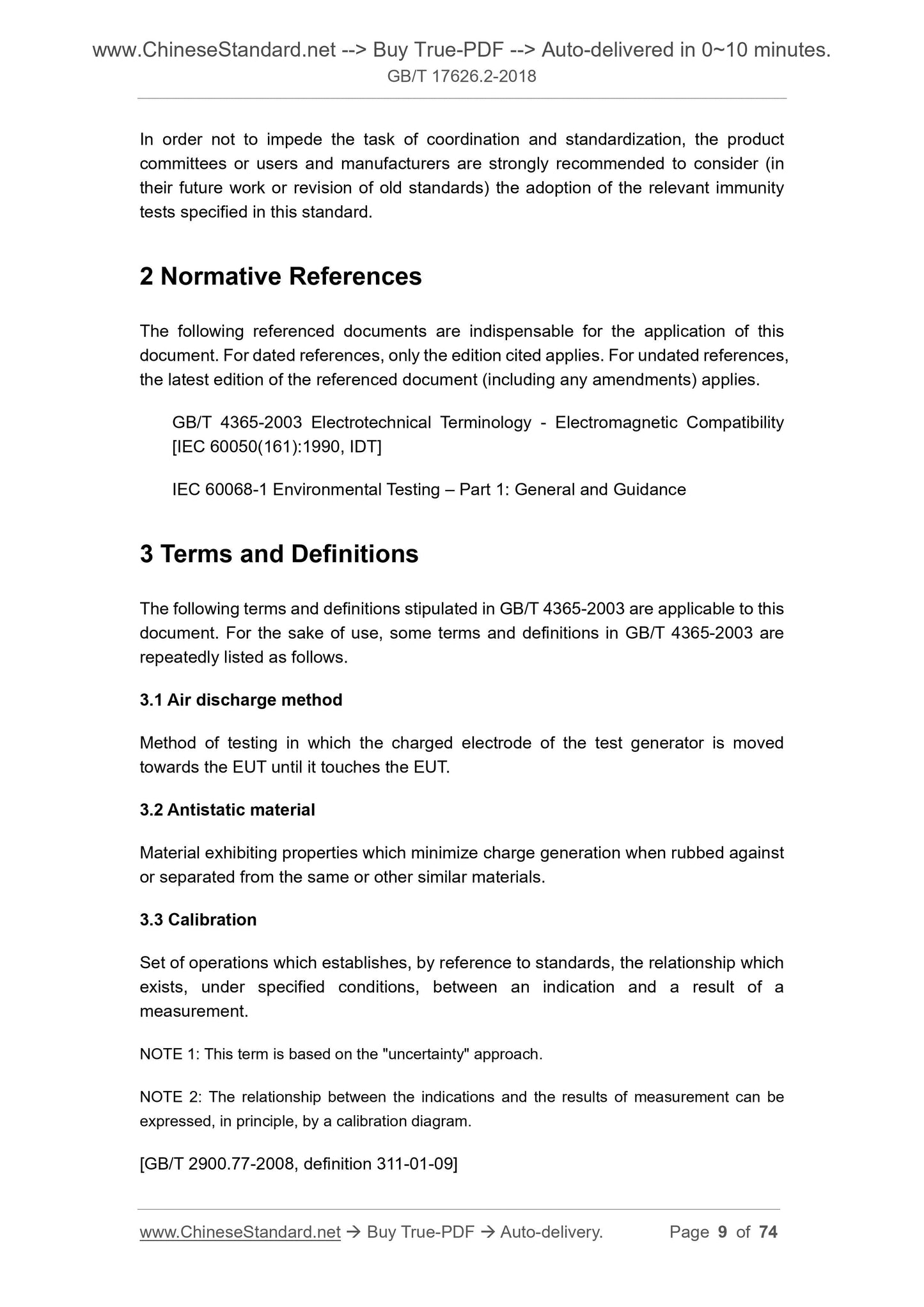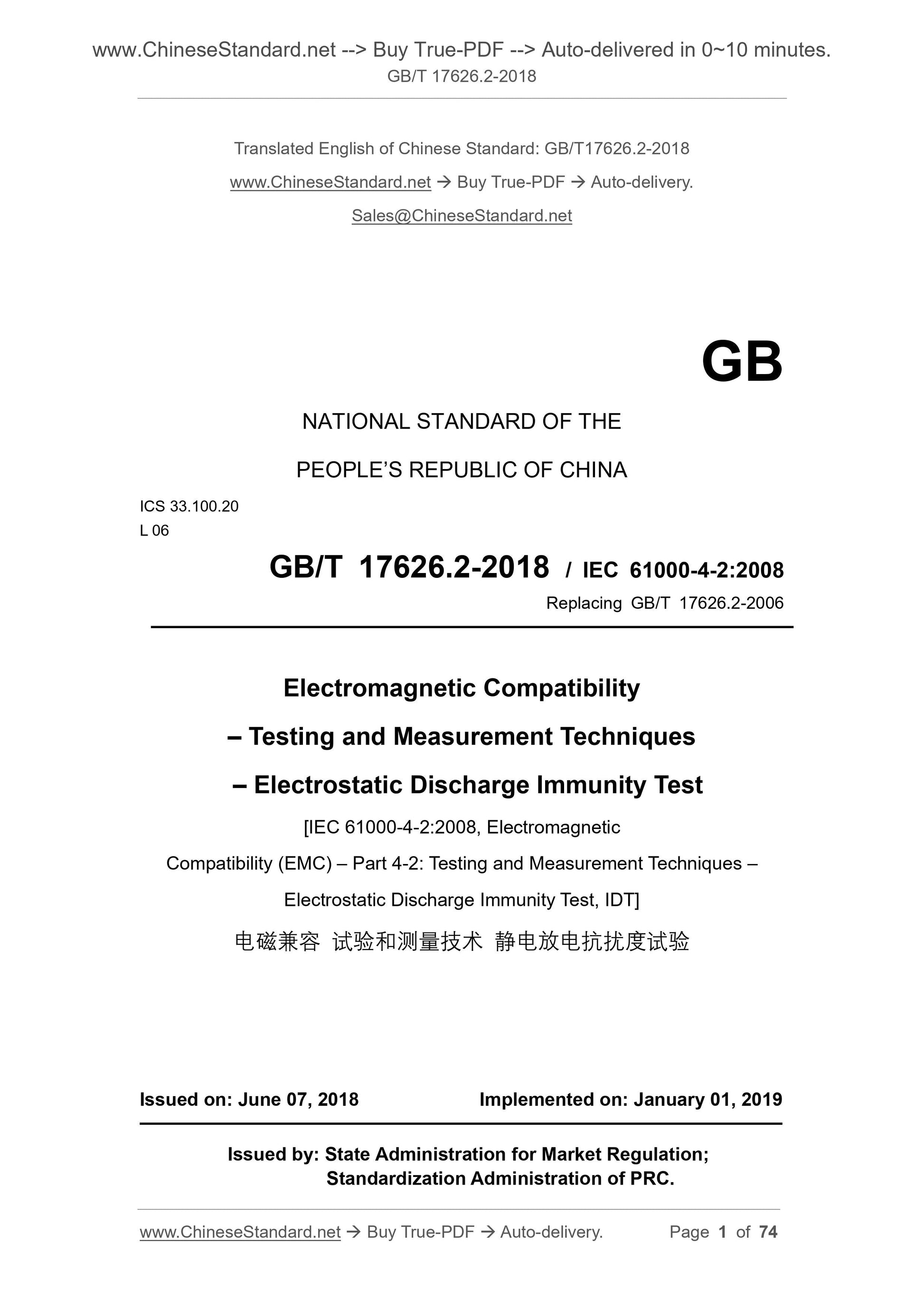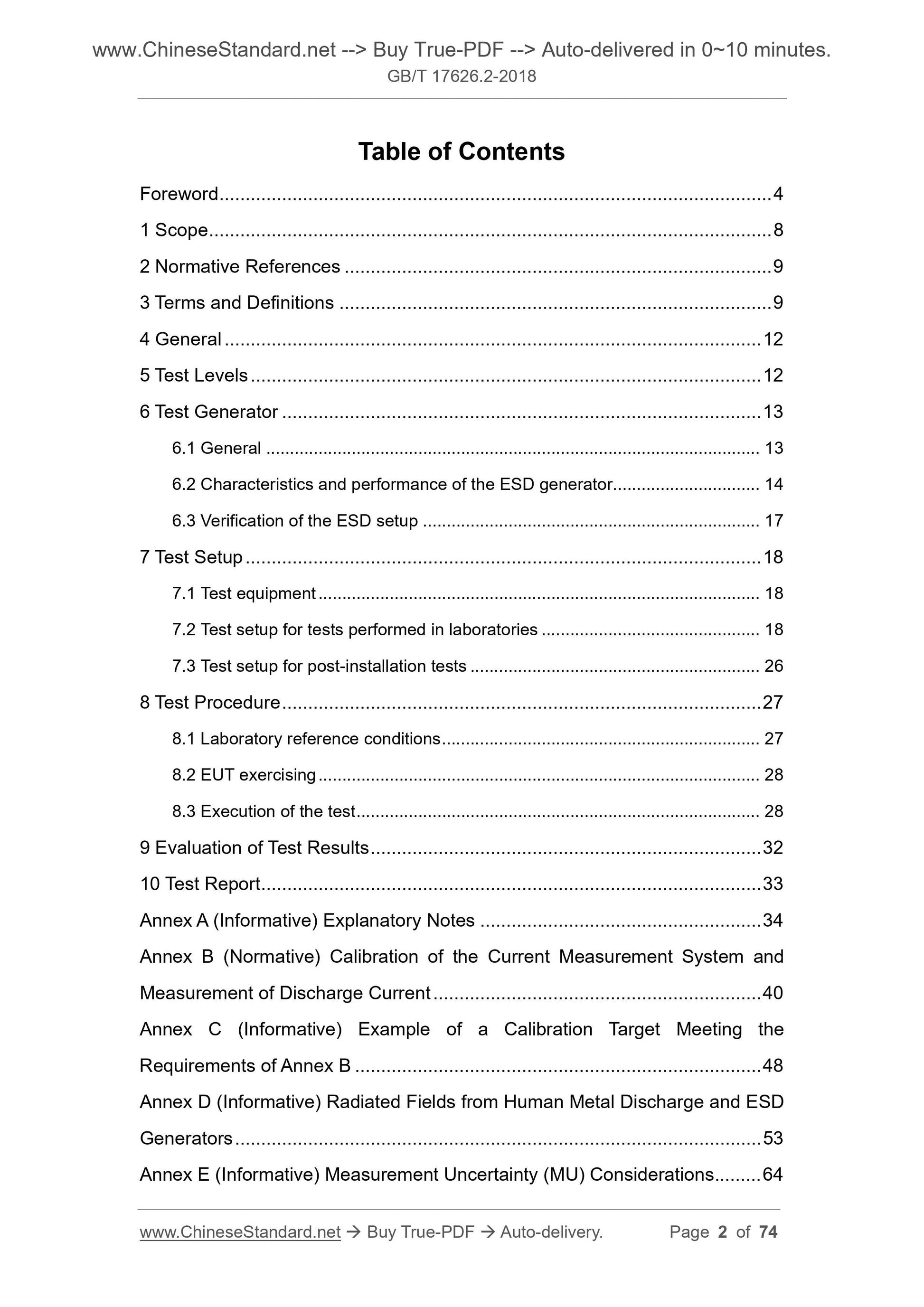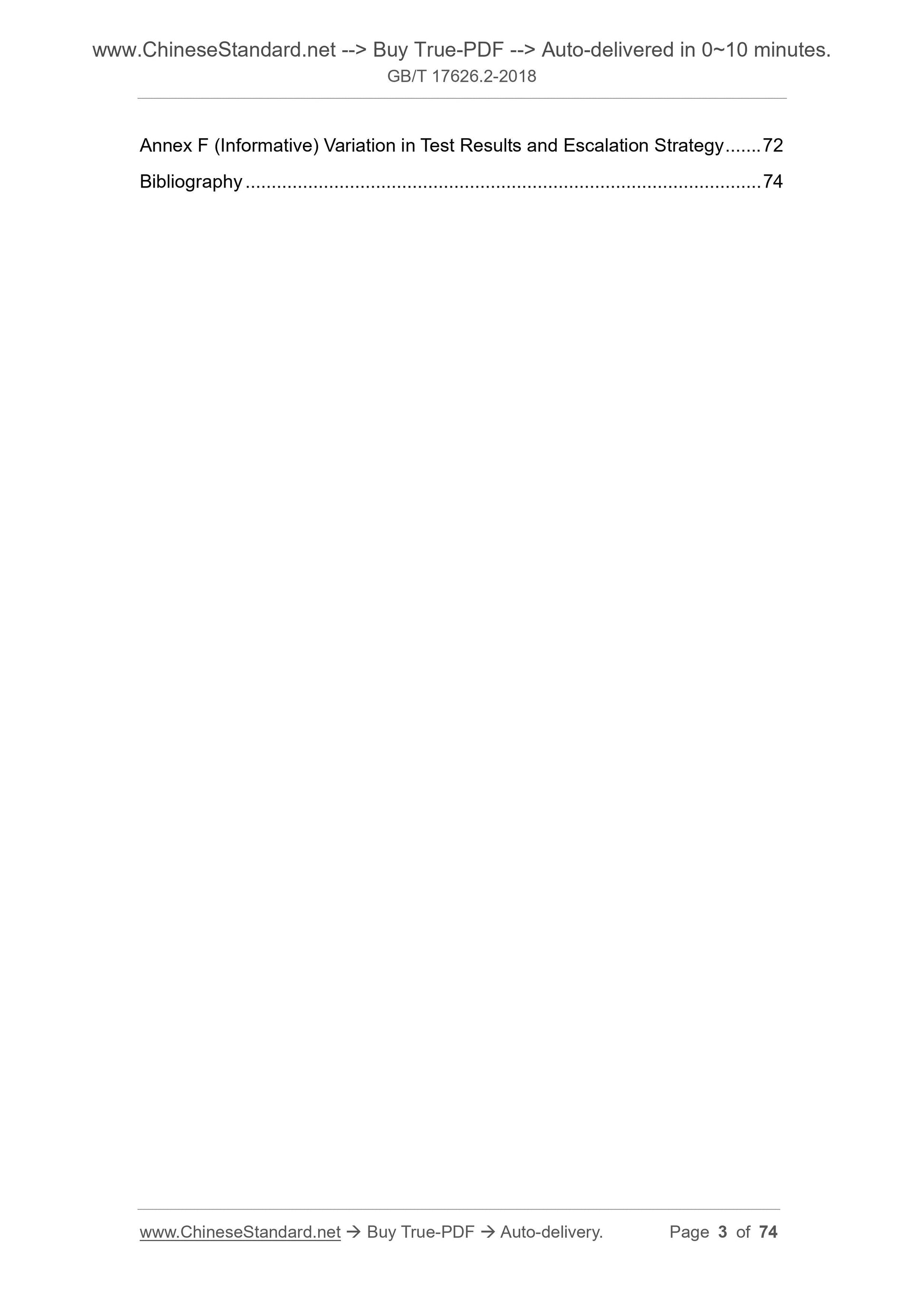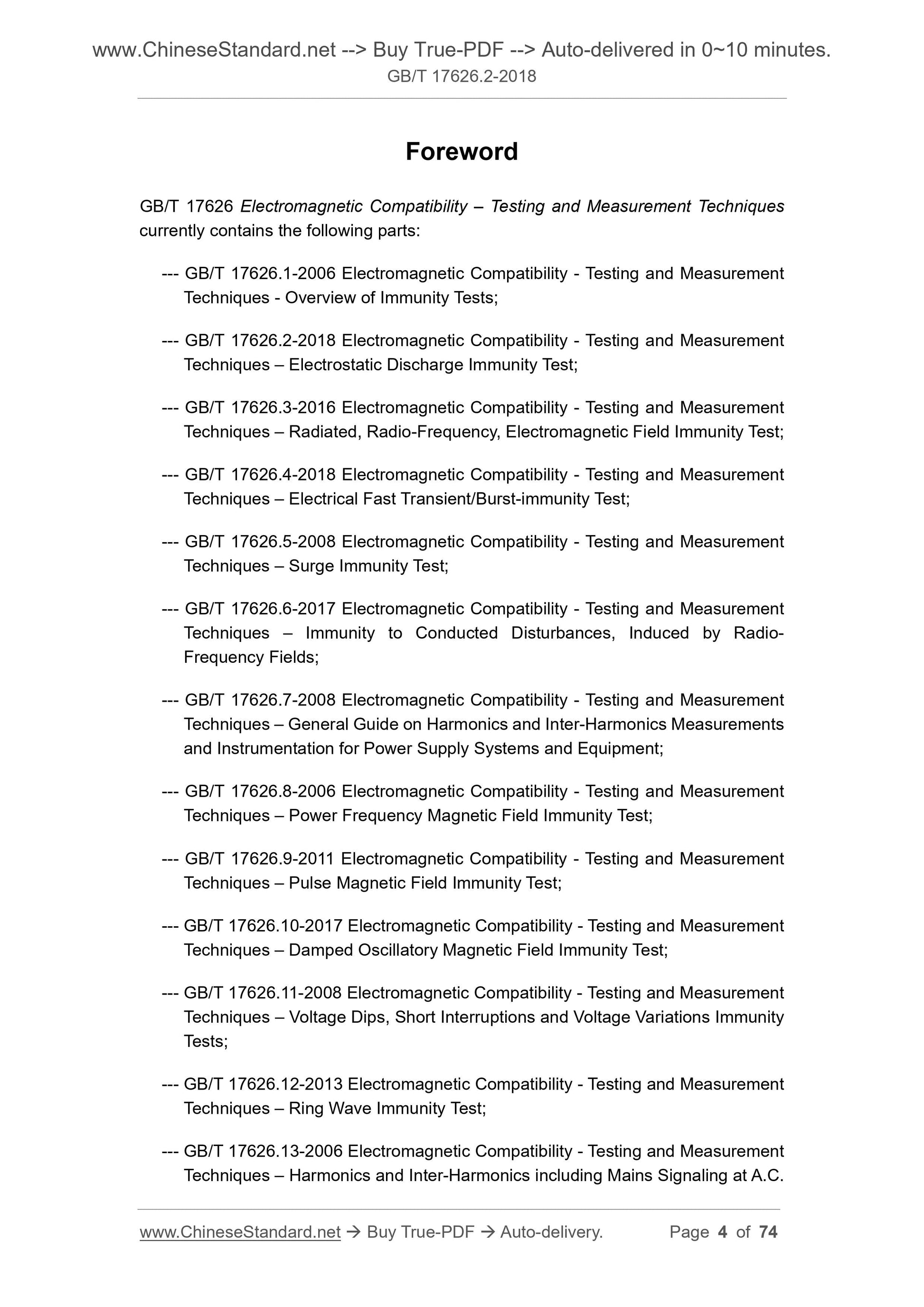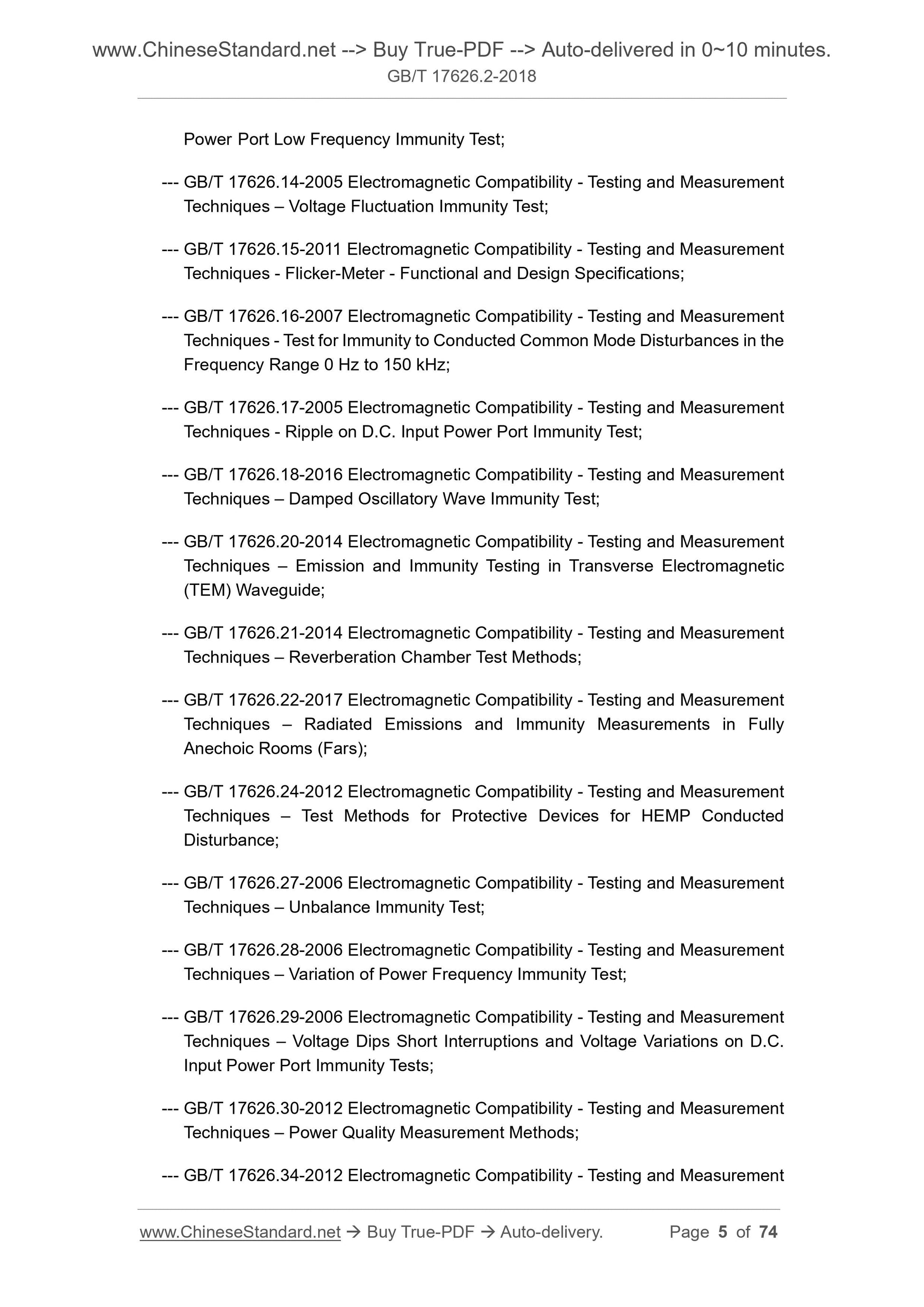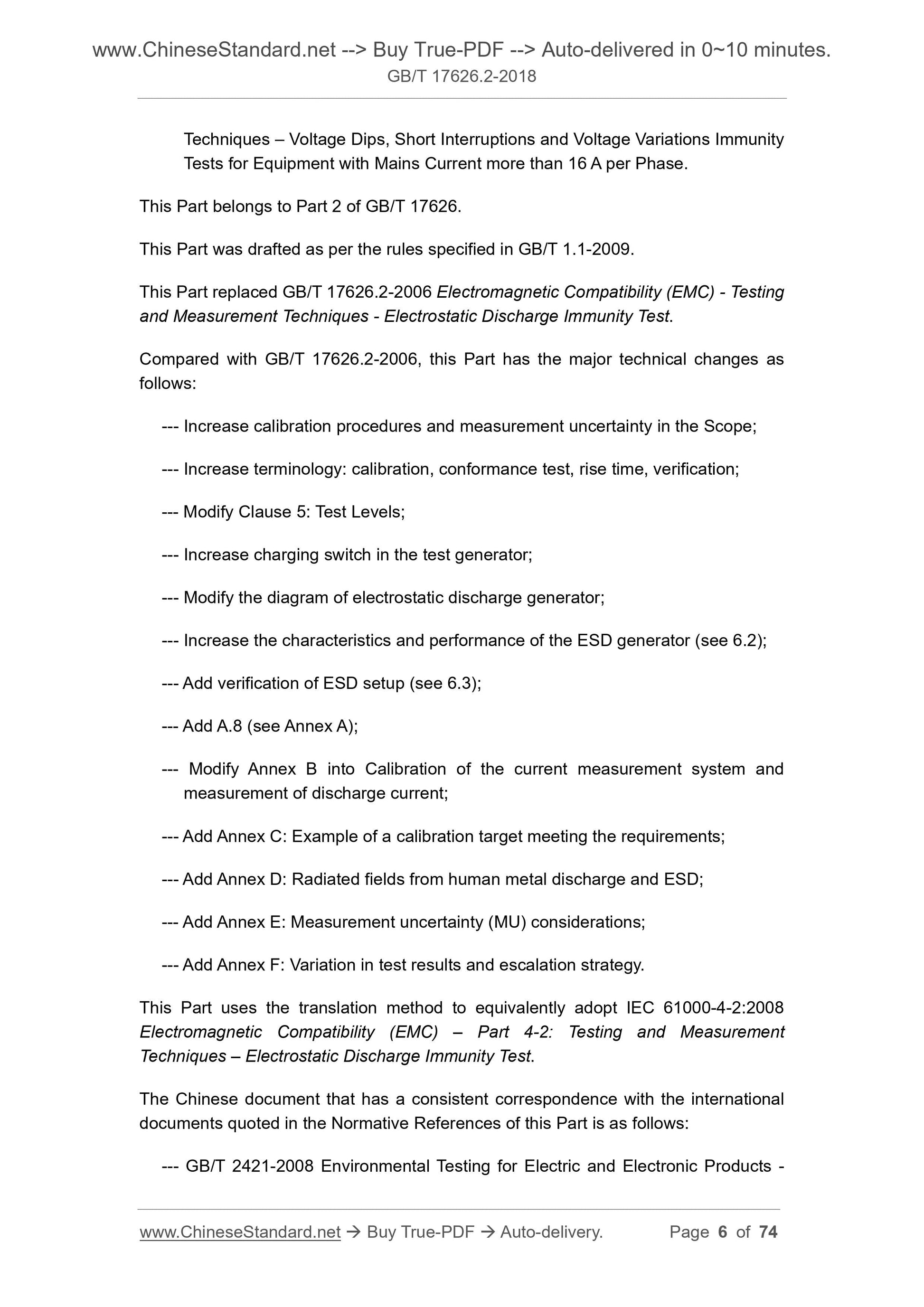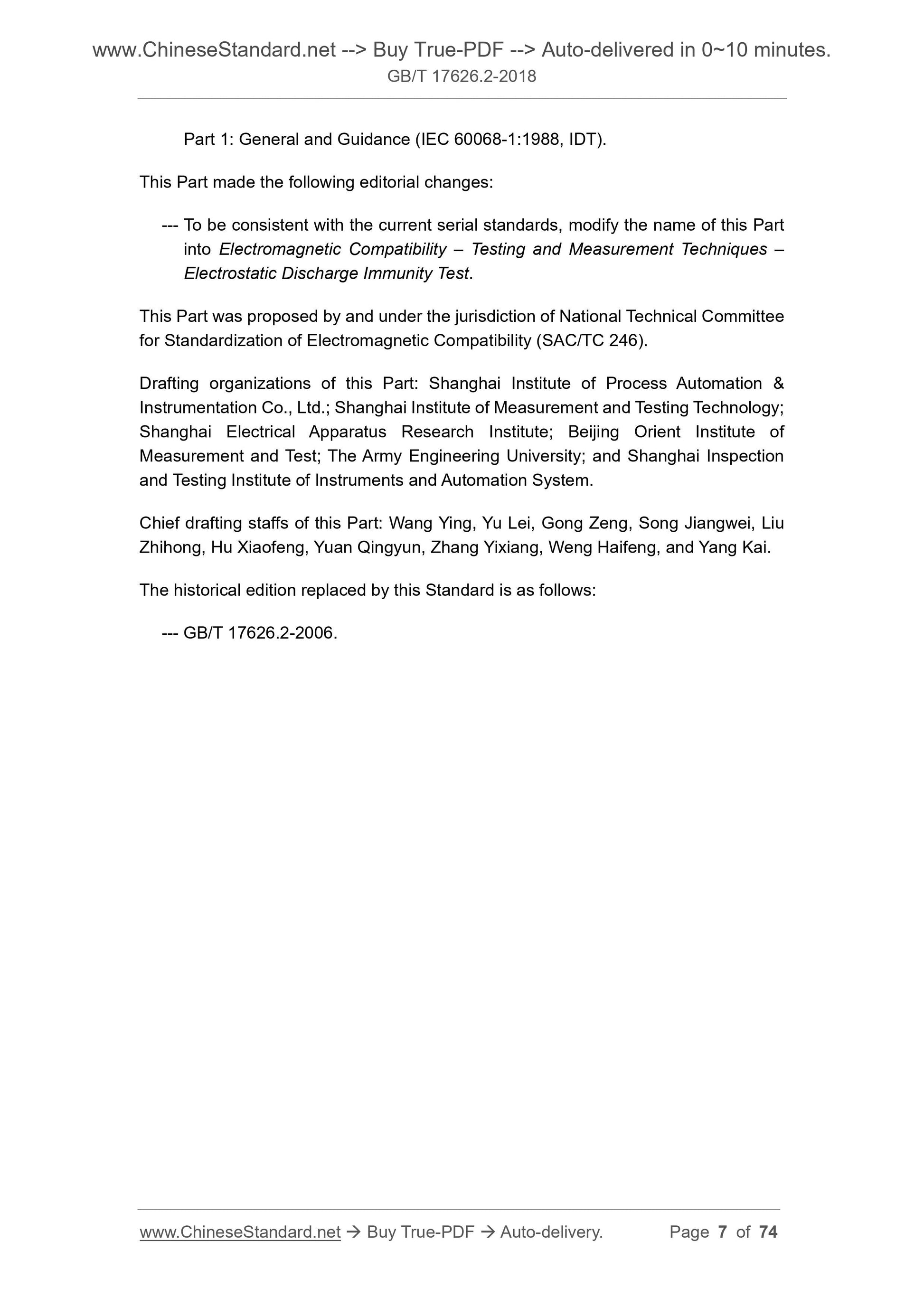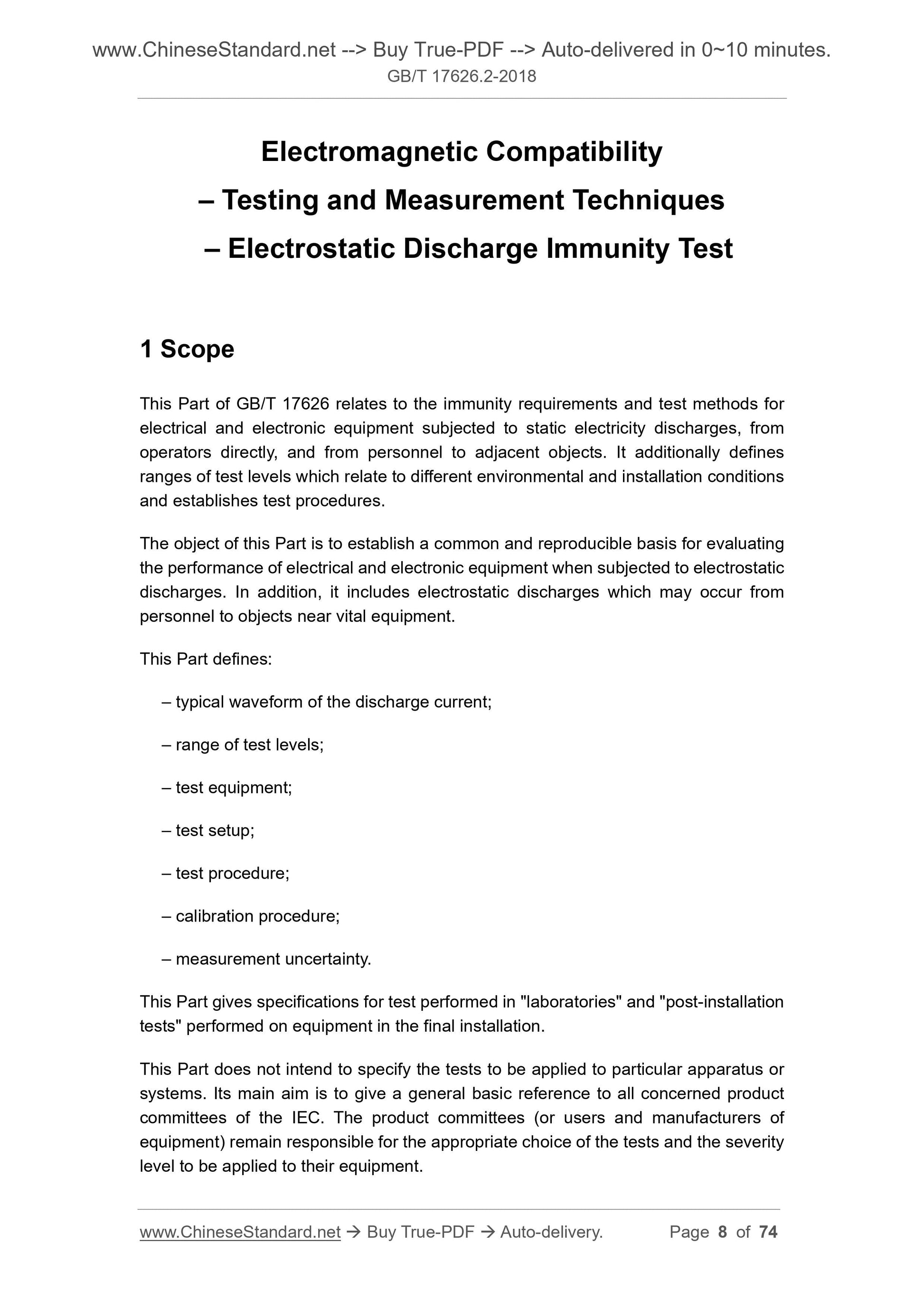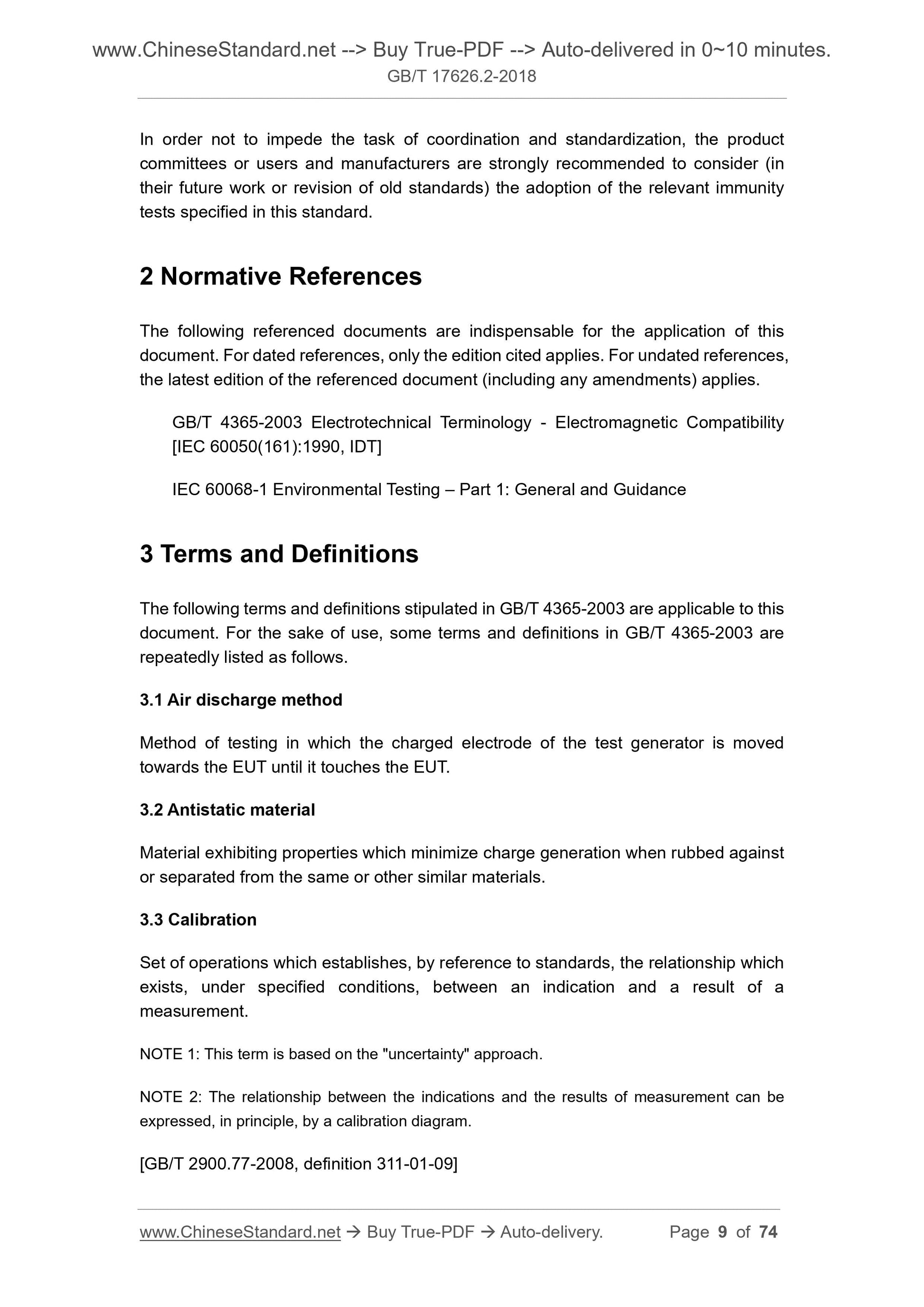1
/
of
9
www.ChineseStandard.us -- Field Test Asia Pte. Ltd.
GB/T 17626.2-2018 English PDF (GB/T17626.2-2018)
GB/T 17626.2-2018 English PDF (GB/T17626.2-2018)
Regular price
$655.00
Regular price
Sale price
$655.00
Unit price
/
per
Shipping calculated at checkout.
Couldn't load pickup availability
GB/T 17626.2-2018: Electromagnetic compatibility -- Testing and measurement techniques -- Electrostatic discharge immunity test
Delivery: 9 seconds. Download (and Email) true-PDF + Invoice.Get Quotation: Click GB/T 17626.2-2018 (Self-service in 1-minute)
Newer / historical versions: GB/T 17626.2-2018
Preview True-PDF
Scope
This Part of GB/T 17626 relates to the immunity requirements and test methods forelectrical and electronic equipment subjected to static electricity discharges, from
operators directly, and from personnel to adjacent objects. It additionally defines
ranges of test levels which relate to different environmental and installation conditions
and establishes test procedures.
Basic Data
| Standard ID | GB/T 17626.2-2018 (GB/T17626.2-2018) |
| Description (Translated English) | Electromagnetic compatibility -- Testing and measurement techniques -- Electrostatic discharge immunity test |
| Sector / Industry | National Standard (Recommended) |
| Classification of Chinese Standard | L06 |
| Classification of International Standard | 33.100.20 |
| Word Count Estimation | 51,510 |
| Date of Issue | 2018-06-07 |
| Date of Implementation | 2019-01-01 |
| Older Standard (superseded by this standard) | GB/T 17626.2-2006 |
| Regulation (derived from) | National Standard Announcement No. 9 of 2018 |
| Issuing agency(ies) | State Administration for Market Regulation, China National Standardization Administration |
Share
